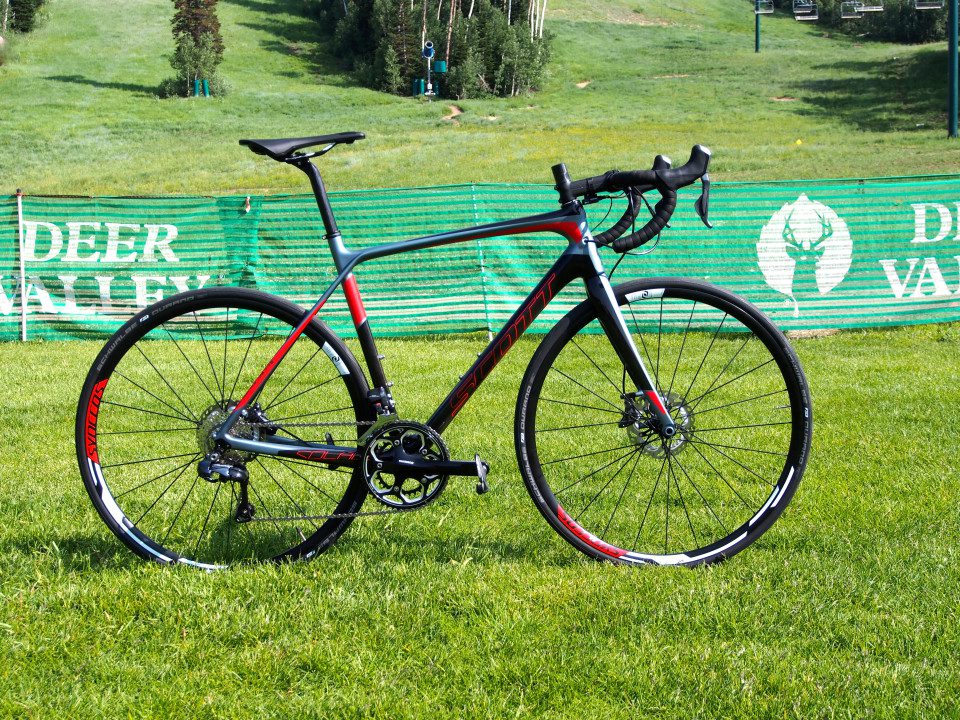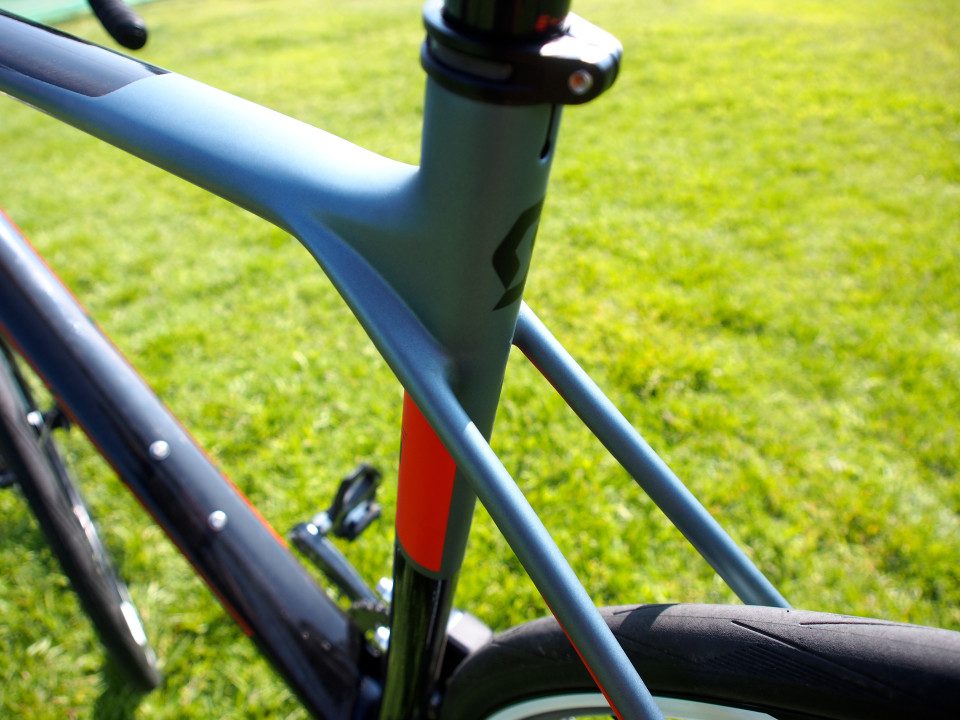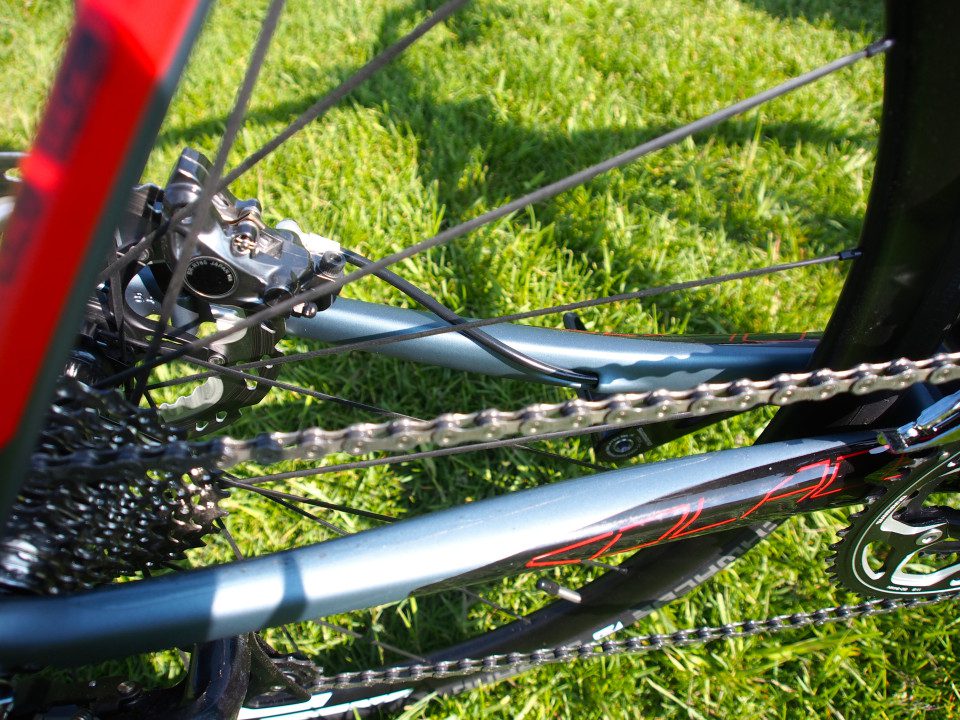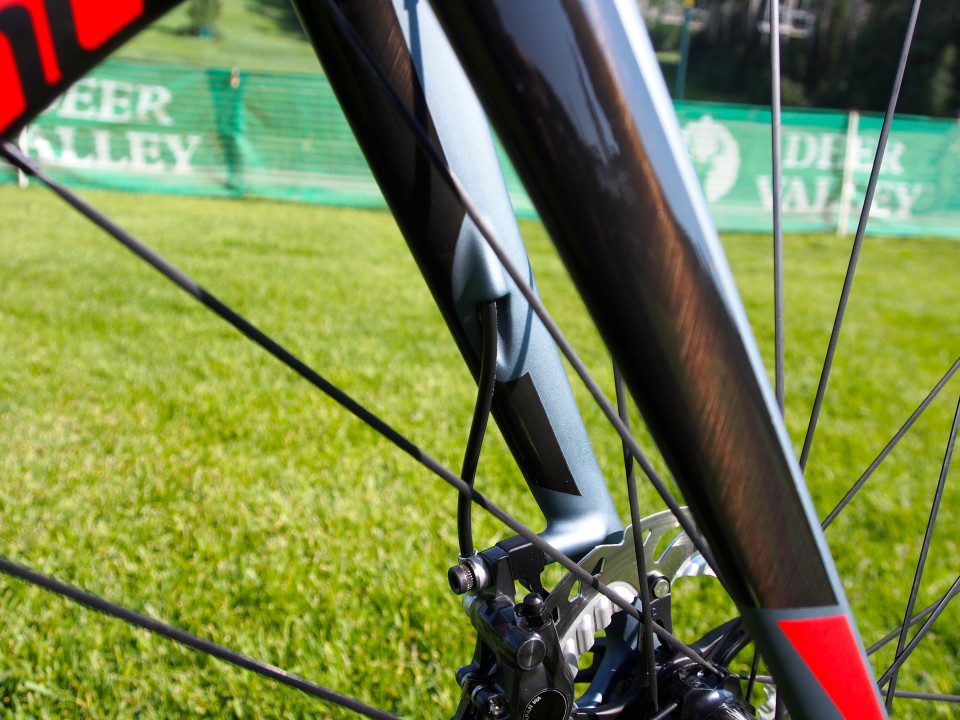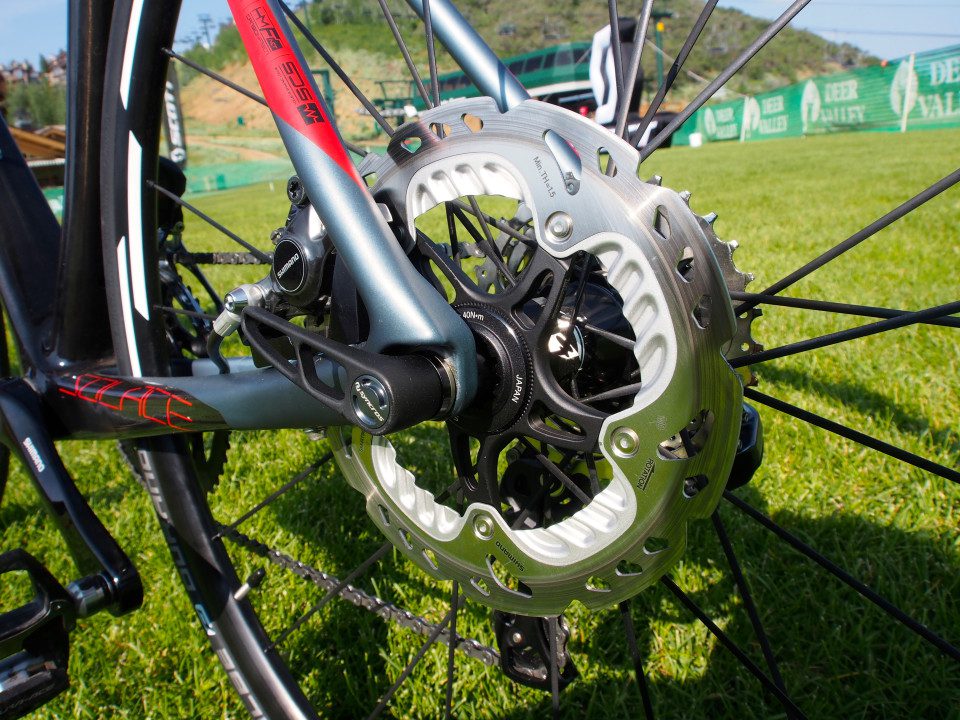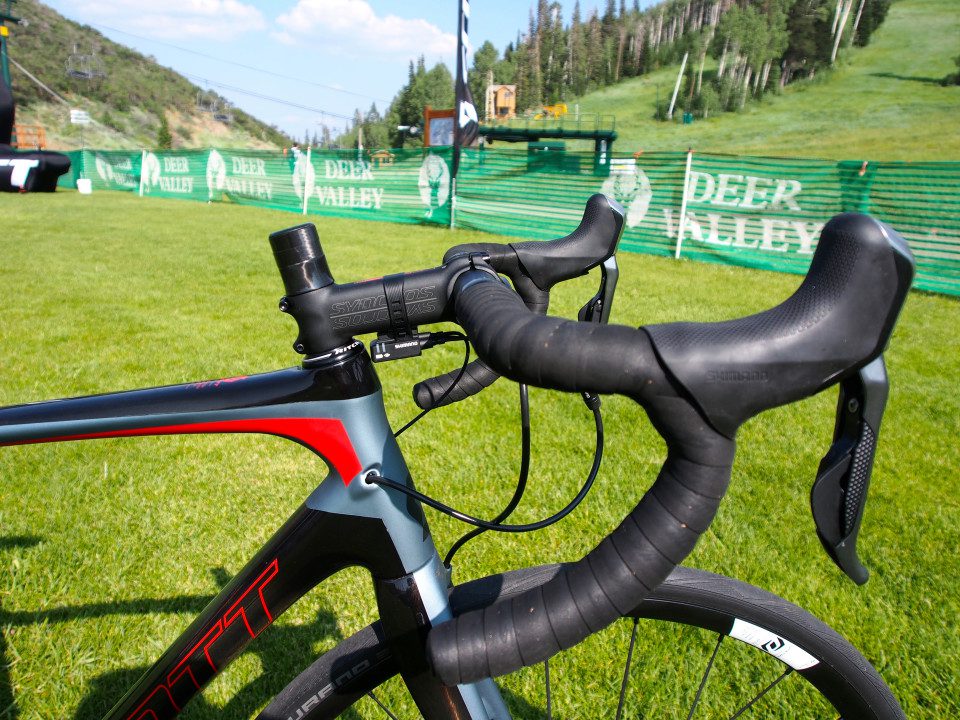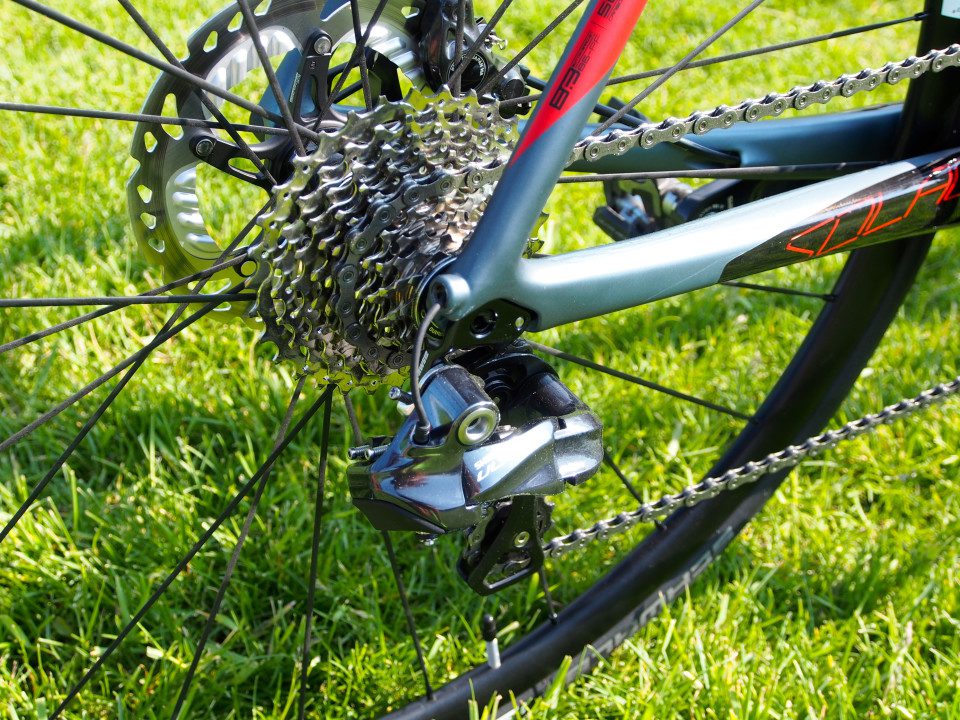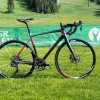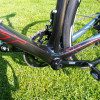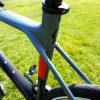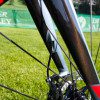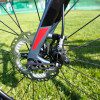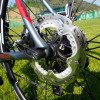2015 preview: Scott Solace Disc
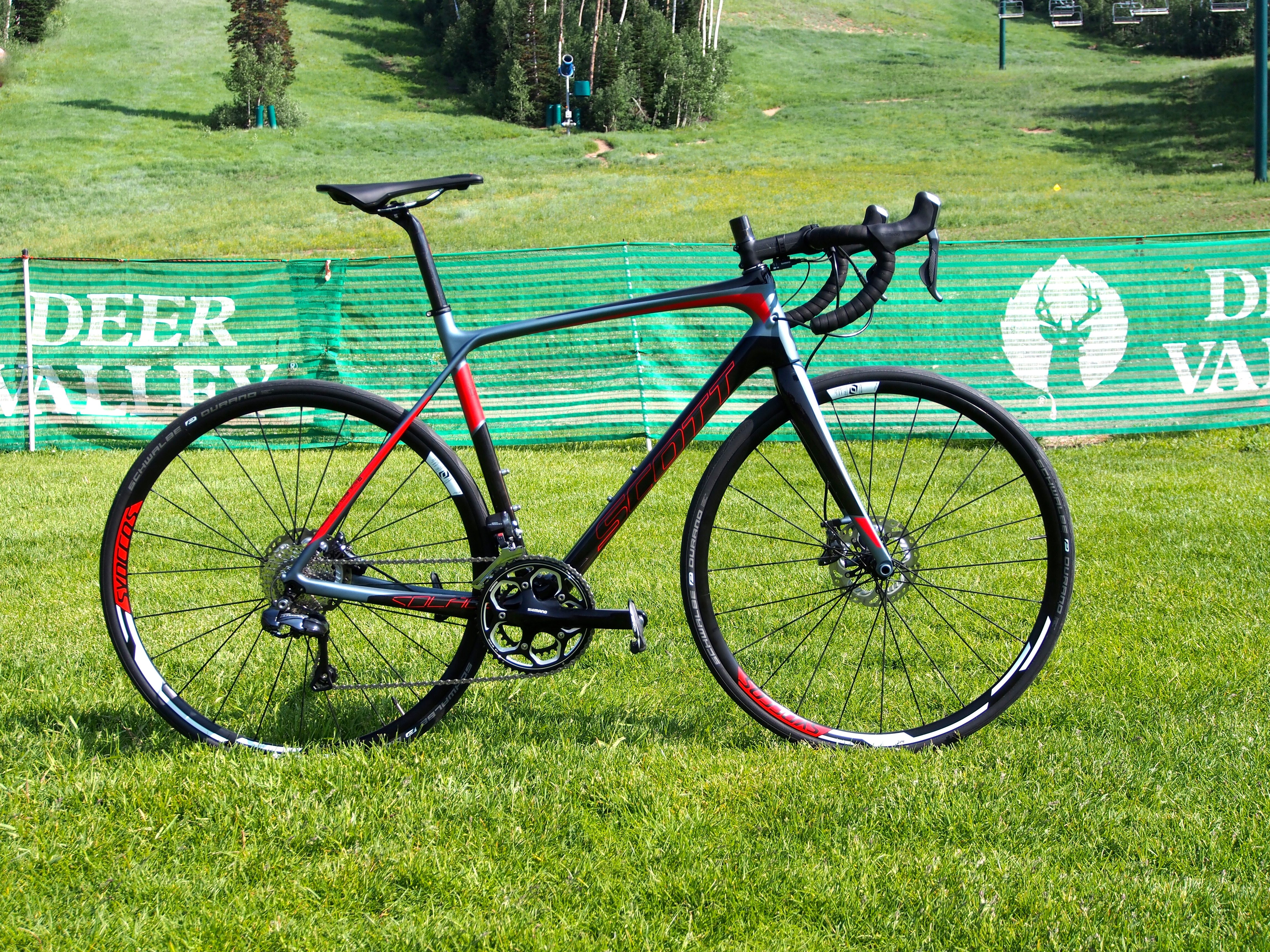
Combining all-day comfort of endurance geometry with the added control of disc brakes, the new Scott Solace Disc features two big current trends in road bike design, promising to be an ideal candidate for a gran fondo or all-day go-anywhere bike.
Blancing comfort and power
A key part of the Solace’s comfort equation is the division of the frame into what Scott’s engineers designate as the “comfort” zone, engineered with flex and compliance in mind, in contrast to the “power” zone, tasked with power transfer and steering precision as its main objectives.
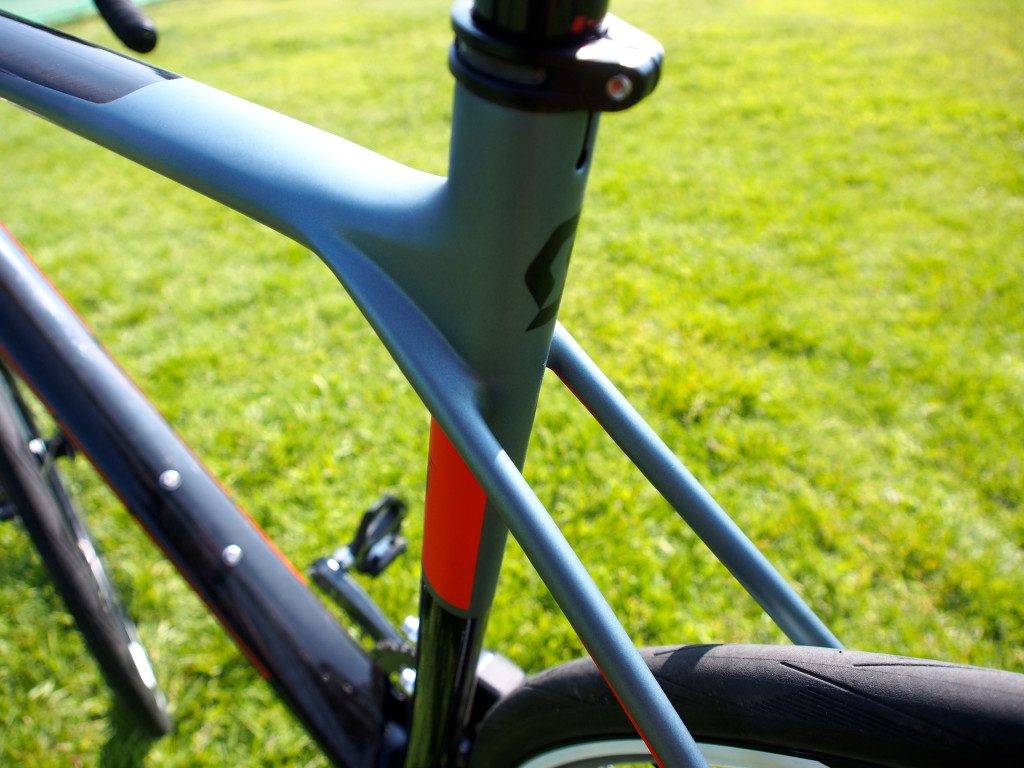
Scott’s engineers targeted the comfort zone, comprising the top tube, seatstays, seat tube and lower part of the fork, to deliver the flex and compliance that translates into a smoother ride. Scott lengthened the seatstays by attaching them to the top tube forward of the seat tube, where stays traditionally attach, making for a longer and more flexible spring. The slim stays and the careful layup of carbon plies give the Solace its smoothly dampened road manners.
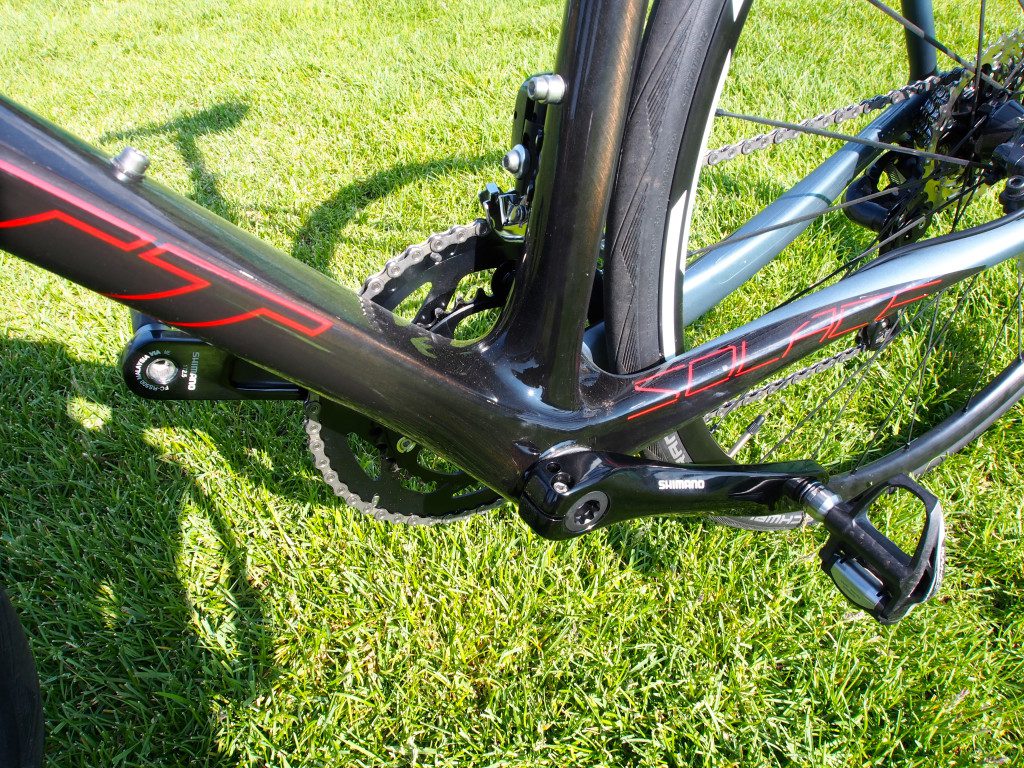
The power zone, which comprises the head tube, down tube, chainstays and fork crown, is all about stiffness. Featuring an oversized PF86 bottom bracket, an oversize down tube and asymmetric chainstays, the Solace is well reinforced to deliver optimal stiffness. That stiffness is matched by the front end with a tapered head tube and fork, both of which ensure accurate steering and resist braking forces.
Wide size range
Of course, all the comfort features and carbon-fibre trickery will be for naught if the bike doesn’t fit. Toward that end, the Solace is available in seven different sizes spanning 47 cm to 61 cm. The Solace also features a less aggressive fit compared to the full-on race bikes of Scott’s lineup, the Addict and the Foil. The Solace’s frames are 1 cm taller in stack and 1 cm shorter in reach, translating to handlebar positions that are a little higher and closer to the rider. Even more impressive, Scott invested in the moulds for a further five sizes for their women-specific Countessa line, for a total of 12 sizes in the range. Scott also varied the tube dimensions and layup across the full size range, to ensure consistent handling and feel from the smallest to biggest frames. So smaller frames get a softer layup schedule and tubes with reduced cross sections, while larger frames are bolstered with bigger tubes and stiffer layups or additional carbon plies.
First ride impressions
Canadian Cycling Magazine was invited to Park City, Utah, 30 minutes from Scott’s U.S. headquarters to preview the 2015 lineup. I was able to spend a couple of hours aboard the Solace Disc in the high mountains surrounding Park City, topping out on climbs at 10,000 feet in elevation and double digits in grade, then do the same loop the next day aboard a Scott Addict. Not enough for a full test review, but pretty good for drawing a solid first impression.
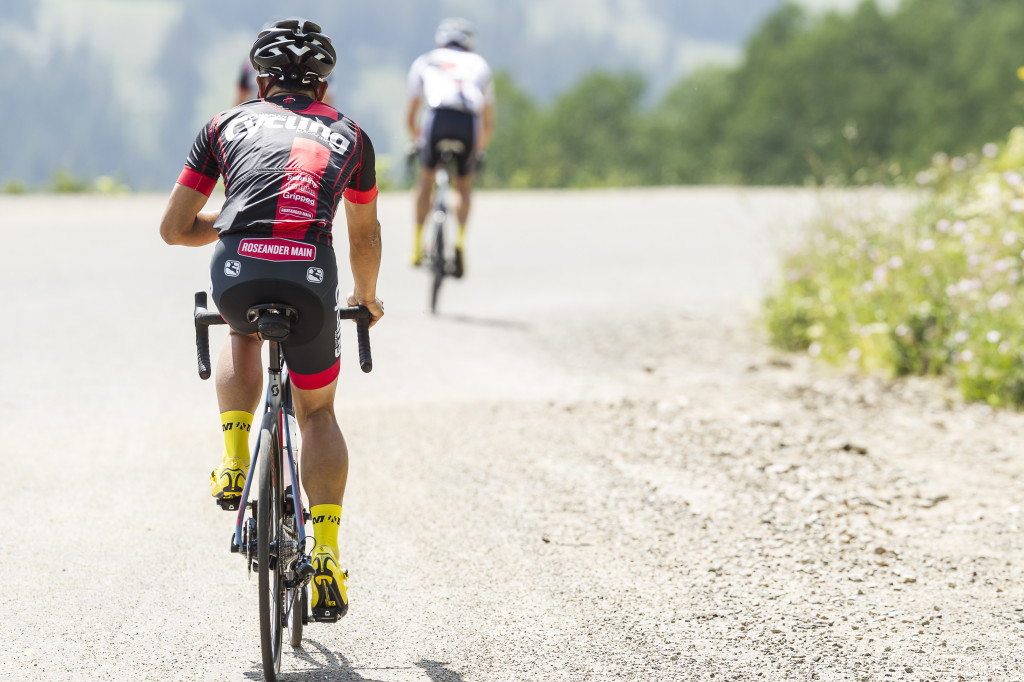
With back-to-back test rides, the markedly smoother ride quality of the Solace came to the fore. I have become quite familiar with the Scott Addict as part of a long-term review for the past few months, and for a purpose-built race bike, the Addict is a remarkably smooth ride. However, it pales in comparison to the Solace.
The effect was particularly pronounced on the climb up Guardsman Pass, one of many roads snaking between the ski resorts in the area. Closed to traffic in the winter, ravaged by repeated freeze-and-thaw cycles, the pockmarked and rutted surface proved a good test of the compliance of the Solace. Climbing up, I was more comfortable staying seated on the Solace, spinning my way up to the thin air. When it came time to head back down, the Solace was more composed compared to the Addict, which was more agile but also more easily bounced off line by the rough surface, while the Solace required less input to stay on the line of my choosing.
A part of this performance is due to the 25-mm tires on the Solace as oppose to the 23-mm tires on Addict. But having ridden an Addict at home with 25-mm tires on roads similar to Guardsman Pass, the differences can’t be entirely attributed to tire width.

The other feature of the Solace Disc that stood out is the disc brakes. Equipped with Shimano’s R785 hydraulic road disc brakes, the Solace provided controlled and powerful braking, consistently. On the long and fast descents around Park City, the difference compare to rim brake was immediate and obvious, even in the dry. I was able to take descents and corners faster, yet feel more in control, especially on rougher roads like Guardsman Pass.
Disc-brakes equipped road bikes have been a hot topic of discussions for the past two years, but 2015 will be the first year to see true purpose-designed bikes hit the market in quantity. Scott’s new Solace Disc looks to be one of the best examples of the new breed. Canadian MSRP is not yet released. Look for an extended test ride and full review in an upcoming issue of Canadian Cycling Magazine.
